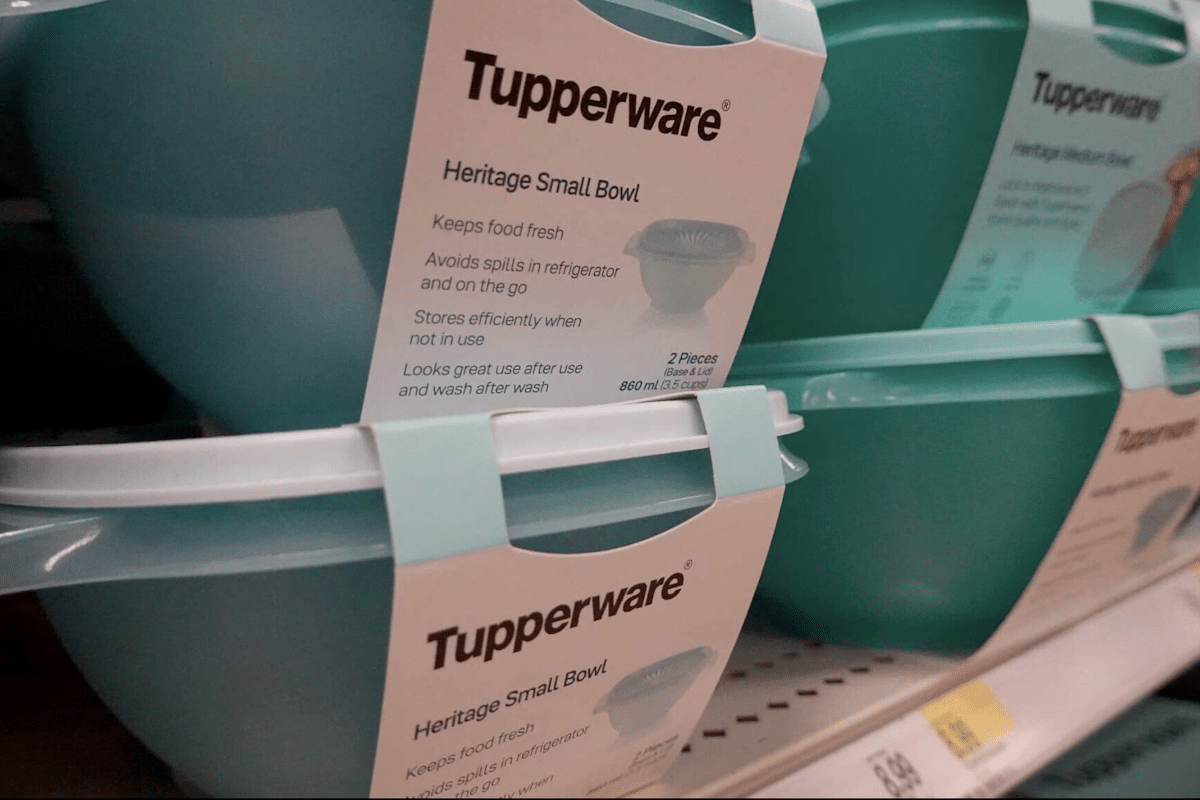Tupperware bankrupt: when innovation doesn’t keep up with the market

Tupperware, a 20th-century icon, declared bankruptcy a few days ago. The brand that revolutionized food storage has been overtaken by a fast-changing market, where shifts in consumer habits and new technology left no room for old business models. But how did it come to this?
An outdated sales model
For years, Tupperware’s sales strategy worked: door-to-door sales, home demonstrations, and parties. This created a loyal customer base, but today it seems old-fashioned. In an era dominated by e-commerce, home parties and product demonstrations no longer fit into the lives of modern consumers. Who would host a party to buy plastic containers today when they can just order them online with one click?
Changing eating habits
The challenge for Tupperware wasn’t just its sales model, but also a big shift in culture: people are cooking less. With the rise of food delivery services and meal prep options, the need for food containers has dropped significantly. The traditional lunchbox, once a symbol of office life, has been replaced by more convenient options that get delivered to your door.
Missed opportunity: M&A as a tool for growth
Despite its strong market position, Tupperware missed an important opportunity: using mergers and acquisitions (M&A) to adapt to modern times. As consumer habits changed, buying innovative companies could have helped Tupperware evolve.
Acquiring companies in areas like food technology, eco-friendly packaging, or food logistics could have helped Tupperware keep up with new trends. For example, startups focused on sustainable packaging or platforms offering meal prep and delivery services could have brought new energy to the brand.
M&A as a way to innovate
M&A could have been more than just a defensive move; it could have driven real innovation. By acquiring new technologies and digital expertise, Tupperware could have repositioned itself as more than just a container company, becoming a key player in food storage and preparation.
For example, buying startups in artificial intelligence (AI) could have led to smart containers that monitor food freshness or suggest recipes. This would have turned simple containers into connected, smart products, in line with current technology trends.
Looking ahead with M&A
Tupperware’s story shows how a company that doesn’t use M&A can get stuck in an outdated business model. A buy-side strategy could have helped the brand grow by entering new, fast-growing markets. In today’s competitive market, acquiring new skills and technology is essential for staying relevant.
A lesson for the future
This article isn’t here to judge Tupperware’s choices, but to highlight a key lesson: innovation never stops, and M&A is a powerful tool for companies that want to stay competitive. The Tupperware case shows how failing to adopt new trends and technologies can slow down even the most famous brands. But it also shows the importance of strategic acquisitions in shaping a company’s future.
In the end, using M&A effectively can be the difference between thriving in a changing market or being left behind. While Tupperware missed this opportunity, other companies can learn from this and understand that acquiring and integrating innovation from the outside is often the key to long-term growth and success.

